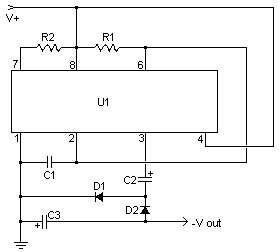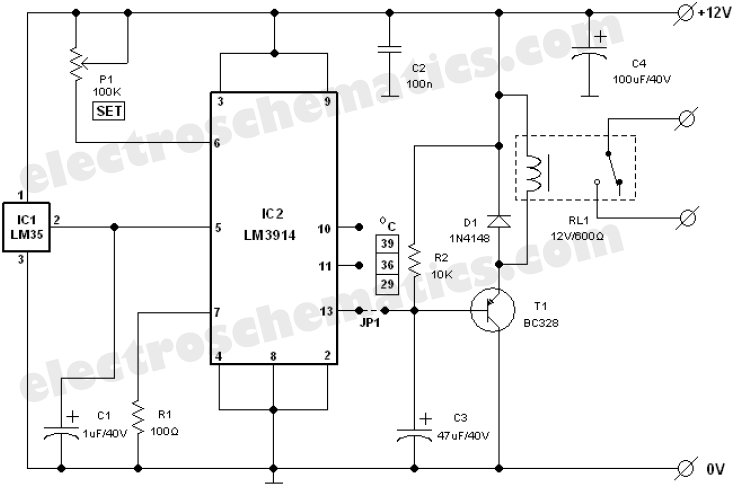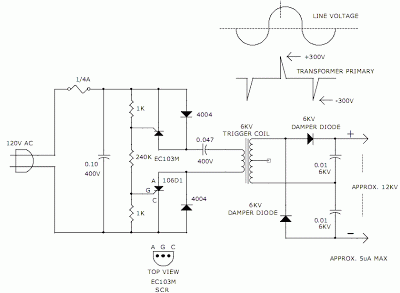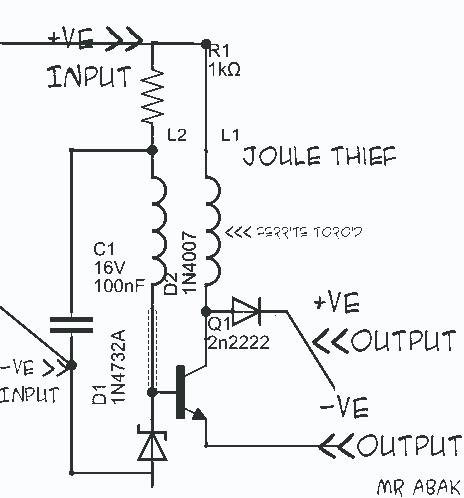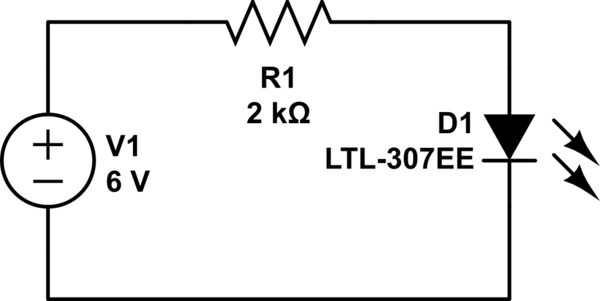
Inverse Voltage Controlled Voltage Source

This circuit enables a smaller control voltage to inversely and linearly control a larger output voltage (Vo). Additionally, the supply voltage (Vsp) for the operational amplifiers can be lower than the output voltage, allowing the circuit to theoretically control an output voltage of any magnitude, as the op-amps can utilize different supply voltages. This configuration is compatible with single-supply op-amps, provided that Vsp is greater than VCmax minus Vrail and Vsn is less than negative Vrail, where Vrail represents the dead zone of the upper rail, typically between 0.5V and 1V. The circuit will experience loss of linearity when attempting to drive the output voltage to zero unless the dead zone around the rail is eliminated. This non-linearity results in a rapid transition of Vo to zero as the control voltage increases linearly. Some op-amps have nearly rail-to-rail input capabilities, meaning that VS is dependent on the selected op-amp. As Vo approaches zero, the input to op-amp U1C must function near 0V, achievable through the proper selection of a single-supply op-amp or by using a negative supply instead of ground. Resistors R3 and R5 draw current and introduce a minor output error on the output voltage. Op-amp U1C acts as a unity buffer, isolating the load from the control loop. Op-amp U1B provides a gain of -1 and introduces an offset voltage of 2Voff. Op-amp U1A linearizes the transistor through its significant negative gain.
The described circuit is a voltage servo system designed to provide precise control of output voltage based on a smaller input control voltage. The configuration allows for flexibility in power supply requirements, enabling operation across a wide range of output voltages. The operational amplifiers are critical components in achieving the desired performance, with U1A, U1B, and U1C serving distinct roles in the feedback and control mechanisms.
U1A's function as a linearizing element is essential for maintaining output stability, particularly as the output approaches its lower limits. The negative gain provided by U1A ensures that the control loop can effectively manage variations in output voltage, compensating for any non-linear behavior that may arise near the lower voltage threshold.
Op-amp U1B, with its gain of -1, serves to invert the control signal, allowing for the inverse relationship between the control voltage and output voltage. The introduction of an offset voltage of 2Voff helps to calibrate the output, ensuring that it meets specific application requirements.
The unity buffer configuration of U1C is vital for decoupling the control loop from the load, allowing the circuit to respond to changes in control voltage without being adversely affected by load variations.
The choice of resistors R3 and R5 is crucial as they not only draw current but also affect the overall accuracy of the output voltage. Careful selection of these components can minimize output errors, thereby enhancing the performance of the circuit.
In summary, this voltage servo circuit is designed for applications requiring precise control over output voltage, with a focus on maintaining linearity and stability across a broad range of operating conditions. Proper component selection and configuration are key to achieving the desired performance characteristics.This circuit allows a smaller control voltage to inversely linearly control a larger output voltage Vo. Another feature is that Vsp the supply to the op-amps can be lower than the output voltage so in theory this circuit could control a output voltage of any magnitude, since the op-amps use a different supply.
This will work with single supply op- amps provided that Vsp>VCmax - Vrail, and Vsn<- Vrail, where Vrail is the dead zone of the upper rail, this is typically. 5V to 1V. This circuit will lose linearity as it attempts to drive the output voltage to zero, unless the dead zone around the rail is zero, because the control voltage approaches VS as Vo goes to zero. This non-linearity will be manifest as a rapid jump of Vo to zero, as Vc increases linearly. Some op-amps have nearly rail to rail input capability, so VS depends on the op-amp you want to use. Since as Vo goes to zero, the input to the op-amp 1C must be able to work near 0V, which can be accomplished by proper selection of a single supply op-amp, or by using a negative supply rather than ground.
R3 and R5 draw current and present a small output error on the output voltage. The op-amp U1C is a unity buffer, which is needed to isolate the load from the control loop. Op-amp U1B provides gain of -1 and provides and offset voltage of 2Voff. Op-amp U1A linearizes the transistor through its large negative gain. Do you need help with an electronics design Daycounter provides contract electronics design services. Contact us to give you a quote on your electronics design project. Warning: include() [ function. include ]: URL file-access is disabled in the server configuration in /usr/local/apache2/htdocs/daycounter/Circuits/Voltage-Servo-Inverse/Voltage-Servo-Inverse.
phtml on line 171 Warning: include( [ function. include ]: failed to open stream: no suitable wrapper could be found in /usr/local/apache2/htdocs/daycounter/Circuits/Voltage-Servo-Inverse/Voltage-Servo-Inverse. phtml on line 171 Warning: include() [ function. include ]: Failed opening ` for inclusion (include_path=`. :/usr/local/php5/lib/php`) in /usr/local/apache2/htdocs/daycounter/Circuits/Voltage-Servo-Inverse/Voltage-Servo-Inverse.
phtml on line 171 Warning: include() [ function. include ]: URL file-access is disabled in the server configuration in /usr/local/apache2/htdocs/daycounter/Circuits/Voltage-Servo-Inverse/Voltage-Servo-Inverse. phtml on line 177 Warning: include( [ function. include ]: failed to open stream: no suitable wrapper could be found in /usr/local/apache2/htdocs/daycounter/Circuits/Voltage-Servo-Inverse/Voltage-Servo-Inverse.
phtml on line 177 Warning: include() [ function. include ]: Failed opening ` for inclusion (include_path=`. :/usr/local/php5/lib/php`) in /usr/local/apache2/htdocs/daycounter/Circuits/Voltage-Servo-Inverse/Voltage-Servo-Inverse. phtml on line 177 🔗 External reference
The described circuit is a voltage servo system designed to provide precise control of output voltage based on a smaller input control voltage. The configuration allows for flexibility in power supply requirements, enabling operation across a wide range of output voltages. The operational amplifiers are critical components in achieving the desired performance, with U1A, U1B, and U1C serving distinct roles in the feedback and control mechanisms.
U1A's function as a linearizing element is essential for maintaining output stability, particularly as the output approaches its lower limits. The negative gain provided by U1A ensures that the control loop can effectively manage variations in output voltage, compensating for any non-linear behavior that may arise near the lower voltage threshold.
Op-amp U1B, with its gain of -1, serves to invert the control signal, allowing for the inverse relationship between the control voltage and output voltage. The introduction of an offset voltage of 2Voff helps to calibrate the output, ensuring that it meets specific application requirements.
The unity buffer configuration of U1C is vital for decoupling the control loop from the load, allowing the circuit to respond to changes in control voltage without being adversely affected by load variations.
The choice of resistors R3 and R5 is crucial as they not only draw current but also affect the overall accuracy of the output voltage. Careful selection of these components can minimize output errors, thereby enhancing the performance of the circuit.
In summary, this voltage servo circuit is designed for applications requiring precise control over output voltage, with a focus on maintaining linearity and stability across a broad range of operating conditions. Proper component selection and configuration are key to achieving the desired performance characteristics.This circuit allows a smaller control voltage to inversely linearly control a larger output voltage Vo. Another feature is that Vsp the supply to the op-amps can be lower than the output voltage so in theory this circuit could control a output voltage of any magnitude, since the op-amps use a different supply.
This will work with single supply op- amps provided that Vsp>VCmax - Vrail, and Vsn<- Vrail, where Vrail is the dead zone of the upper rail, this is typically. 5V to 1V. This circuit will lose linearity as it attempts to drive the output voltage to zero, unless the dead zone around the rail is zero, because the control voltage approaches VS as Vo goes to zero. This non-linearity will be manifest as a rapid jump of Vo to zero, as Vc increases linearly. Some op-amps have nearly rail to rail input capability, so VS depends on the op-amp you want to use. Since as Vo goes to zero, the input to the op-amp 1C must be able to work near 0V, which can be accomplished by proper selection of a single supply op-amp, or by using a negative supply rather than ground.
R3 and R5 draw current and present a small output error on the output voltage. The op-amp U1C is a unity buffer, which is needed to isolate the load from the control loop. Op-amp U1B provides gain of -1 and provides and offset voltage of 2Voff. Op-amp U1A linearizes the transistor through its large negative gain. Do you need help with an electronics design Daycounter provides contract electronics design services. Contact us to give you a quote on your electronics design project. Warning: include() [ function. include ]: URL file-access is disabled in the server configuration in /usr/local/apache2/htdocs/daycounter/Circuits/Voltage-Servo-Inverse/Voltage-Servo-Inverse.
phtml on line 171 Warning: include( [ function. include ]: failed to open stream: no suitable wrapper could be found in /usr/local/apache2/htdocs/daycounter/Circuits/Voltage-Servo-Inverse/Voltage-Servo-Inverse. phtml on line 171 Warning: include() [ function. include ]: Failed opening ` for inclusion (include_path=`. :/usr/local/php5/lib/php`) in /usr/local/apache2/htdocs/daycounter/Circuits/Voltage-Servo-Inverse/Voltage-Servo-Inverse.
phtml on line 171 Warning: include() [ function. include ]: URL file-access is disabled in the server configuration in /usr/local/apache2/htdocs/daycounter/Circuits/Voltage-Servo-Inverse/Voltage-Servo-Inverse. phtml on line 177 Warning: include( [ function. include ]: failed to open stream: no suitable wrapper could be found in /usr/local/apache2/htdocs/daycounter/Circuits/Voltage-Servo-Inverse/Voltage-Servo-Inverse.
phtml on line 177 Warning: include() [ function. include ]: Failed opening ` for inclusion (include_path=`. :/usr/local/php5/lib/php`) in /usr/local/apache2/htdocs/daycounter/Circuits/Voltage-Servo-Inverse/Voltage-Servo-Inverse. phtml on line 177 🔗 External reference
